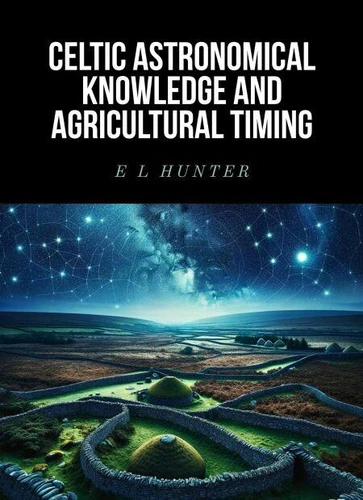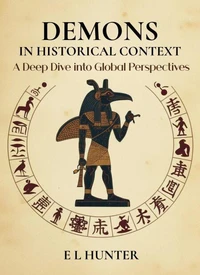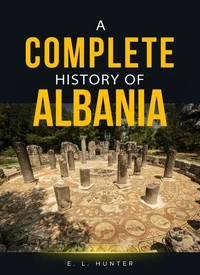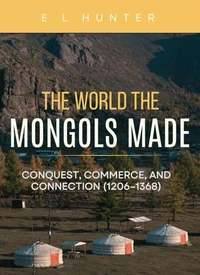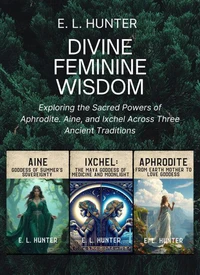Celtic Astronomical Knowledge and Agricultural Timing
Par :Formats :
Disponible dans votre compte client Decitre ou Furet du Nord dès validation de votre commande. Le format ePub est :
- Compatible avec une lecture sur My Vivlio (smartphone, tablette, ordinateur)
- Compatible avec une lecture sur liseuses Vivlio
- Pour les liseuses autres que Vivlio, vous devez utiliser le logiciel Adobe Digital Edition. Non compatible avec la lecture sur les liseuses Kindle, Remarkable et Sony
 , qui est-ce ?
, qui est-ce ?Notre partenaire de plateforme de lecture numérique où vous retrouverez l'ensemble de vos ebooks gratuitement
Pour en savoir plus sur nos ebooks, consultez notre aide en ligne ici
- FormatePub
- ISBN8230681885
- EAN9798230681885
- Date de parution09/07/2025
- Protection num.pas de protection
- Infos supplémentairesepub
- ÉditeurIndependently Published
Résumé
From the late Bronze Age through the Roman period, Celtic communities across Europe developed sophisticated systems integrating celestial observation with agricultural practice. This study examines the material and cultural evidence for astronomical timing in Celtic farming, offering new insights into indigenous European knowledge systems that have been overshadowed in conventional narratives of ancient technological development. The author synthesizes multiple evidence types-archaeological alignments at sites like Newgrange and the Coligny Calendar, linguistic analysis of Celtic calendrical terminology, ethnographic records of persistent traditions, and results from controlled experimental trials-while carefully navigating the interpretive challenges inherent in reconstructing knowledge from primarily non-literate societies.
Through this interdisciplinary approach, specific practices emerge with clarity: solstitial field alignments that optimized growing seasons, lunar-phase planting traditions that corresponded with soil moisture patterns, and the use of stellar markers like the Pleiades to signal critical agricultural transitions. This investigation reveals how Celtic communities from Atlantic Ireland to the Danube adapted astronomical knowledge to diverse environmental conditions, developing regionally-specific agricultural calendars that maintained landscape productivity despite climate fluctuations documented in the paleoenvironmental record.
By integrating these findings, the work advances our understanding of pre-Roman European intellectual traditions while illuminating sophisticated indigenous approaches to sustainable landscape management that maintained productivity across centuries. This study will interest archaeologists, archaeoastronomers, agricultural historians, and scholars of Celtic studies, providing a methodologically rigorous examination of the environmental knowledge embedded within Europe's indigenous agricultural heritage.
Through this interdisciplinary approach, specific practices emerge with clarity: solstitial field alignments that optimized growing seasons, lunar-phase planting traditions that corresponded with soil moisture patterns, and the use of stellar markers like the Pleiades to signal critical agricultural transitions. This investigation reveals how Celtic communities from Atlantic Ireland to the Danube adapted astronomical knowledge to diverse environmental conditions, developing regionally-specific agricultural calendars that maintained landscape productivity despite climate fluctuations documented in the paleoenvironmental record.
By integrating these findings, the work advances our understanding of pre-Roman European intellectual traditions while illuminating sophisticated indigenous approaches to sustainable landscape management that maintained productivity across centuries. This study will interest archaeologists, archaeoastronomers, agricultural historians, and scholars of Celtic studies, providing a methodologically rigorous examination of the environmental knowledge embedded within Europe's indigenous agricultural heritage.
From the late Bronze Age through the Roman period, Celtic communities across Europe developed sophisticated systems integrating celestial observation with agricultural practice. This study examines the material and cultural evidence for astronomical timing in Celtic farming, offering new insights into indigenous European knowledge systems that have been overshadowed in conventional narratives of ancient technological development. The author synthesizes multiple evidence types-archaeological alignments at sites like Newgrange and the Coligny Calendar, linguistic analysis of Celtic calendrical terminology, ethnographic records of persistent traditions, and results from controlled experimental trials-while carefully navigating the interpretive challenges inherent in reconstructing knowledge from primarily non-literate societies.
Through this interdisciplinary approach, specific practices emerge with clarity: solstitial field alignments that optimized growing seasons, lunar-phase planting traditions that corresponded with soil moisture patterns, and the use of stellar markers like the Pleiades to signal critical agricultural transitions. This investigation reveals how Celtic communities from Atlantic Ireland to the Danube adapted astronomical knowledge to diverse environmental conditions, developing regionally-specific agricultural calendars that maintained landscape productivity despite climate fluctuations documented in the paleoenvironmental record.
By integrating these findings, the work advances our understanding of pre-Roman European intellectual traditions while illuminating sophisticated indigenous approaches to sustainable landscape management that maintained productivity across centuries. This study will interest archaeologists, archaeoastronomers, agricultural historians, and scholars of Celtic studies, providing a methodologically rigorous examination of the environmental knowledge embedded within Europe's indigenous agricultural heritage.
Through this interdisciplinary approach, specific practices emerge with clarity: solstitial field alignments that optimized growing seasons, lunar-phase planting traditions that corresponded with soil moisture patterns, and the use of stellar markers like the Pleiades to signal critical agricultural transitions. This investigation reveals how Celtic communities from Atlantic Ireland to the Danube adapted astronomical knowledge to diverse environmental conditions, developing regionally-specific agricultural calendars that maintained landscape productivity despite climate fluctuations documented in the paleoenvironmental record.
By integrating these findings, the work advances our understanding of pre-Roman European intellectual traditions while illuminating sophisticated indigenous approaches to sustainable landscape management that maintained productivity across centuries. This study will interest archaeologists, archaeoastronomers, agricultural historians, and scholars of Celtic studies, providing a methodologically rigorous examination of the environmental knowledge embedded within Europe's indigenous agricultural heritage.

